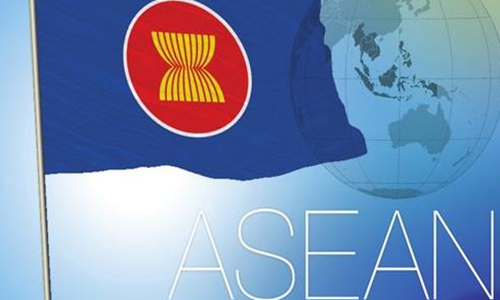
Photo: IC
The current coronavirus crisis could herald a new era in which China and the Association of Southeast Asian Nations (ASEAN) will see closer economic integration in terms of both scale and quality. And a joint recovery of the region's production chain is paramount not just for the Asia-Pacific economy but for the world economy to pull through this unprecedented economic disruption.Data released by the Chinese General Administration of Customs showed on Tuesday that ASEAN replaced the EU to become China's largest trading partner in the first quarter of this year, with bilateral trade up 6.1 percent year-on-year to 991.34 billion yuan ($140.62 billion).
While it is comforting to see the positive increase in China's trade with ASEAN even amid the coronavirus pandemic, contracted manufacturing activities in some ASEAN countries have cast a shadow over future trade prospects. According to data from IHS Markit, manufacturers in the seven monitored ASEAN countries were hit hard by the pandemic in March. The ASEAN purchasing managers' index (PMI) fell from 50.2 in February to 43.3 in March, with Singapore's PMI slumping to 27.7 and Vietnam's down to 41.9.
With a Southeast Asian supply chain centering around China coming into being, the regional economic cooperation between China and ASEAN has arrived at an unprecedented level of economic interdependence. To a certain extent, such a relationship means that even though the Chinese and ASEAN economies have taken a hard hit from the coronavirus, it is unlikely to break existing industrial chains and ASEAN members will be the first to feel the spillover effects of China's economic revival.
Now is the time for China to spare no effort to help the recovery of the ASEAN production chain. That is because the Chinese economy cannot fully recover without the support of ASEAN's trade and industrial chain. A joint return to normal economic activities is crucial to restoring normalcy to the regional value chain.
For starters, China could coordinate with ASEAN members to ensure supplies of raw materials and smooth logistics in the region. China could also make appropriate adjustments to expand imports from ASEAN members. Moreover, high-level cooperation and arrangement should be made between the two sides to help regional businesses adapt to virus shocks to industrial chains.
The China-centered Southeast Asian economy has become a major source of momentum for the global economy and a major manufacturing base for the world. If ASEAN, China, Japan and South Korea can take the lead in recovering from the virus, that will inject great vitality and confidence into the Asia-Pacific and global economies.
